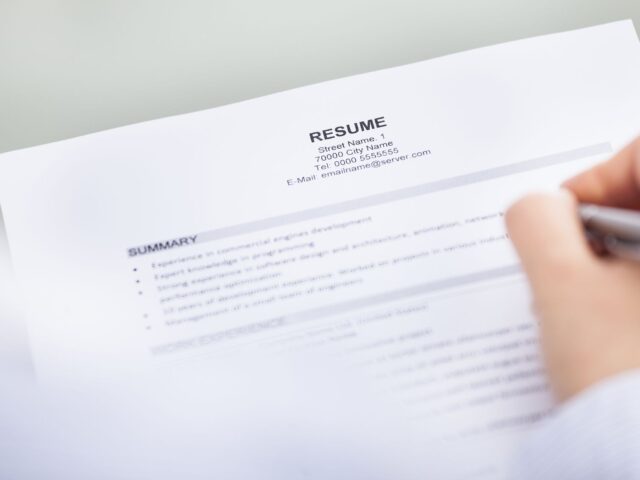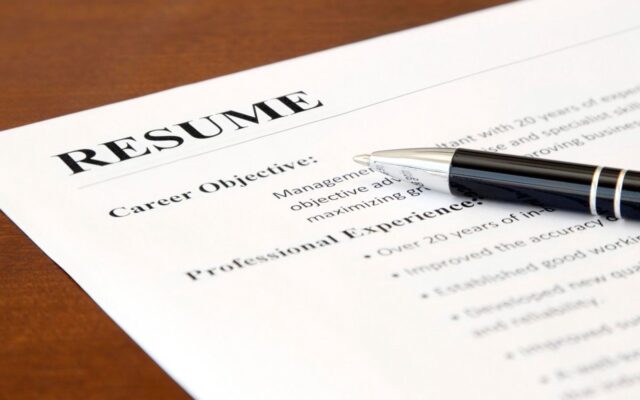
You’re in high school, and you’ll soon be applying to college or your first job. You need a resume, and you need it fast. Not only that, you need a really good resume that will land the job you want or get you into the school of your dreams.
You can learn how to create a resume that will grow with you – one that you can add to and adapt as you reach your career goals and set new ones. The best part is, resume writing doesn’t have to be hard. All you have to do is follow these simple steps.
As an added bonus, check out these high school student resume templates here resumegiants.com. They’ll give your resume a professional look and make setup a breeze.
1. Get Your Information Ready

Your resume will have just a few simple sections: your contact information, your skills, your education, and your work experience.
You may be thinking, “Wait a sec – I don’t have any work experience!” While you might not have had an official job yet, you may have more experience than you think. Get out a piece of paper and a pencil, and write down the answers to the following questions.
- What is my expected graduation date?
- Where do I plan to go to college? Have I been accepted? Have I gotten any scholarship offers?
- What extracurricular activities have I been involved in? Am I in any school clubs What sports teams have I played on?
- Have I received any special honors or awards? Have I won any competitions?
- Have I ever worked unofficially as a babysitter, pet sitter, dog walker, leaf raker, grass cutter, or something else?
- Where have I volunteered? When?
- Have I taken any special classes that teach a particular skill or subject?
- What computer programs do I know how to use?
- What are my hobbies? How do I spare my free time?
In the next step, we’ll plug this information into your resume.
2. Plug in Your Information
If you’re using a resume template, all you will have to do is type the information in the appropriate box. If you’re creating your own using a word processor, you’ll also have to add the section headings. Let’s look at each in turn.
Contact Information

Contact information typically includes your name, phone number with country code, mailing address, and email address. You can also include a LinkedIn profile if you have one, or a link to a portfolio of art or photography if applicable to your job. Don’t include links to your personal social media accounts.
Pro tip: If your email address is something silly like “[email protected],” you should create a professional email address to use on your resumes and applications. Your name or initials should suffice.
Education
Typically, the education lists degrees or certifications you have obtained. But, graduation may yet be a future event. If so, construct your high school information in this way:
- High School Diploma
- Name of High School
- City, State – Expected Graduation in [Year]
If you’ve been accepted to a college, you can do something similar:
- Name of Course of Study
- Name of College
- City, State – Expected Graduation in [Year]
You can also list any classes, in school or extracurricular, that pertain to your desired job. These might include shop class, home economics, photography, painting, or music lessons. Give the class a name, state the location, and list the years covered.
Experience

If you haven’t previously had a job, you can call this section “Experience” rather than “Work Experience.” Or, if all of your experience falls into a single category, you may want to title it “Extracurricular Activities” or “Volunteerism.”
Look again at your answers to the questions posed at the outset. You don’t have to include everything on your resume, but think about what might be pertinent to your job. If it shows you are a responsible person, it is probably a good choice. Consider the following examples.
Babysitting
Carson City, Nevada – 2024 to 2024
- Cared for three children aged two to eight on Friday nights from 3 to 10 pm
- Prepared meals, cleaned up messes, and helped with homework
National Beta Club
Springfield High School, Springfield, TN – 2018 to 2024
- Kept records of club meetings
- Participated in annual fundraiser carwash
As you gain more real-world work experience, you can replace these items.
Skills and Related Sections
Your skills section is a simple list of things you know how to do. Examples include computer repair, Adobe photoshop, speaking another language, or baking.
Similarly, you may want to include a section listing awards you have received. If your page looks too empty, you can even include a section like “Hobbies” or “Personal Interests.” Later, you can remove this section as your resume fleshes out with school and work experiences.
3. Update Your Resume Regularly

Now that you’ve got a solid resume in hand, it can grow with you as you reach your goals or forge new paths in your career. You simply need to update your resume regularly.
How often should you update your resume? Experts recommend reading through it and making any needed changes at least once or twice a year. Also, if you have a change of job or address, learn a new skill, or receive a certification, take the time to revise and update your resume following the event.
In this way, you will not only have a strong resume fresh out of high school, but at any time you need it throughout life.
In Conclusion
Creating your first real resume as a high school student is an important step. It can help you get a job or get into college. It will also equip you with the skills you need to update and alter your resume throughout your career.












